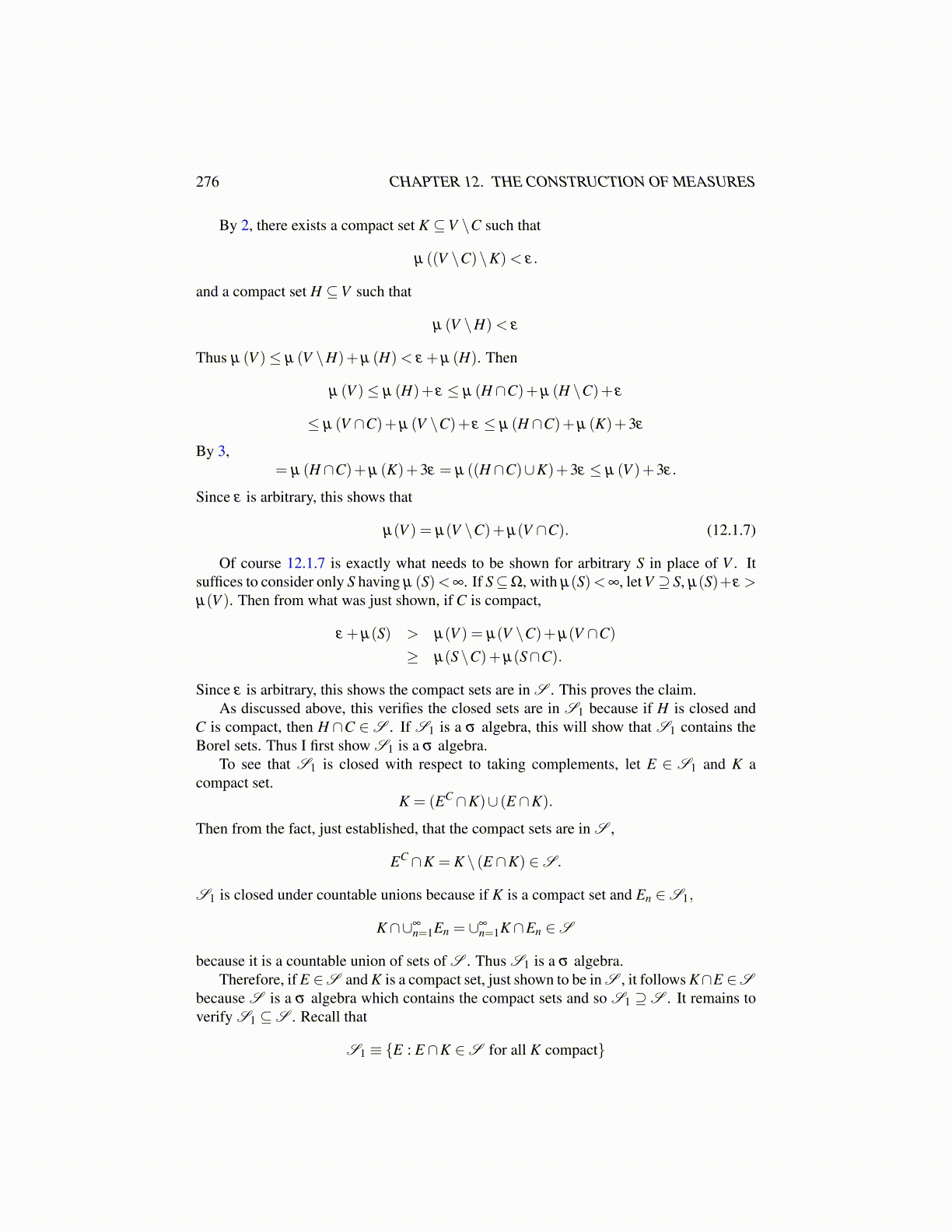
276 CHAPTER 12. THE CONSTRUCTION OF MEASURES
By 2, there exists a compact set K ⊆V \C such that
µ ((V \C)\K)< ε.
and a compact set H ⊆V such that
µ (V \H)< ε
Thus µ (V )≤ µ (V \H)+µ (H)< ε +µ (H). Then
µ (V )≤ µ (H)+ ε ≤ µ (H ∩C)+µ (H \C)+ ε
≤ µ (V ∩C)+µ (V \C)+ ε ≤ µ (H ∩C)+µ (K)+3ε
By 3,= µ (H ∩C)+µ (K)+3ε = µ ((H ∩C)∪K)+3ε ≤ µ (V )+3ε.
Since ε is arbitrary, this shows that
µ(V ) = µ(V \C)+µ(V ∩C). (12.1.7)
Of course 12.1.7 is exactly what needs to be shown for arbitrary S in place of V . Itsuffices to consider only S having µ (S)<∞. If S⊆Ω, with µ(S)<∞, let V ⊇ S, µ(S)+ε >µ(V ). Then from what was just shown, if C is compact,
ε +µ(S) > µ(V ) = µ(V \C)+µ(V ∩C)
≥ µ(S\C)+µ(S∩C).
Since ε is arbitrary, this shows the compact sets are in S . This proves the claim.As discussed above, this verifies the closed sets are in S1 because if H is closed and
C is compact, then H ∩C ∈S . If S1 is a σ algebra, this will show that S1 contains theBorel sets. Thus I first show S1 is a σ algebra.
To see that S1 is closed with respect to taking complements, let E ∈ S1 and K acompact set.
K = (EC ∩K)∪ (E ∩K).
Then from the fact, just established, that the compact sets are in S ,
EC ∩K = K \ (E ∩K) ∈S.
S1 is closed under countable unions because if K is a compact set and En ∈S1,
K∩∪∞n=1En = ∪∞
n=1K∩En ∈S
because it is a countable union of sets of S . Thus S1 is a σ algebra.Therefore, if E ∈S and K is a compact set, just shown to be in S , it follows K∩E ∈S
because S is a σ algebra which contains the compact sets and so S1 ⊇S . It remains toverify S1 ⊆S . Recall that
S1 ≡ {E : E ∩K ∈S for all K compact}